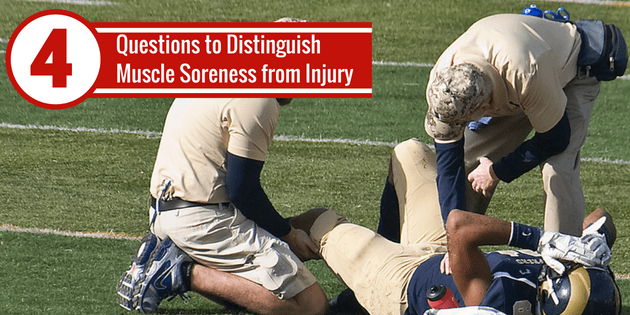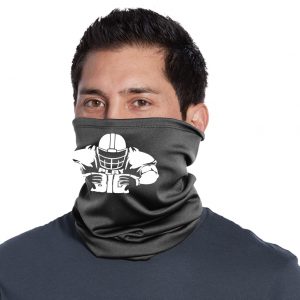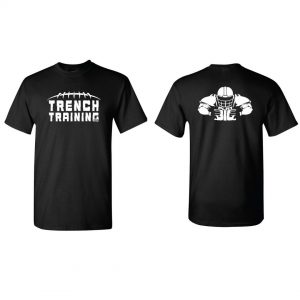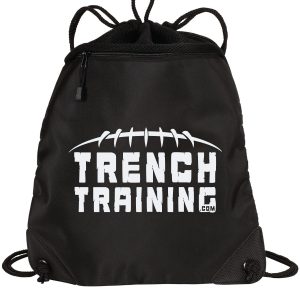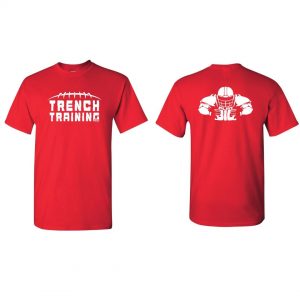The start of football practice brings so many exciting things.
Getting your helmet & pads, putting on your practice jersey for the first time, seeing all your friends that you haven’t seen much over the summer, meeting new coaches…
There’s also the not so exciting things like gassers, cross fields, sprint ladders, sit-ups, pushups, and the dreaded muscle soreness.
Sometimes it can be difficult to tell if you child has muscle soreness or if they have an injury.
In today’s post, we are going to discuss the difference between being sore and being injured/hurt.
[video_player type=”embed” width=”560″ height=”315″ align=”center” margin_top=”0″ margin_bottom=”20″]![]() [/video_player]
[/video_player]
Have you ever heard someone say that they are getting in “football shape”?
What does it mean to be in football shape?
No matter how fit a player is heading into a football season it’s not the same as football practice and games.
A football player uses muscles every day in practice in a way that they are not simulating in training.
That alone will create a lot of muscle soreness in that first week of practice.
Just about the time a player starts to feel better… we add pads.
Wearing pads and participating in contact drills adds a whole other level of soreness.
This is VERY normal.
What is difficult to tell, at times, is the difference between being sore and being hurt or injured.
Let’s be clear we are NOT doctors and we didn’t stay at a Holiday Inn last night, but we have a little experience with soreness and injury.
Here are 4 questions to help you determine what’s happening with your athlete.
4 Questions to Distinguish Muscle Soreness from Pain
How does your athlete describe the pain?
Is it a dull ache when they move?
More times than not this is muscle soreness.
If the pain is sharp or acute then that could be the sign of an injury.
Body language tells a lot.
When you first put the pads on for fall football camp it feels like you got hit by a dump truck.
This is completely normal.
Sharp or acute pain is not normal and that’s the number one thing you want to listen for from your athlete.
Where on the body is the pain?
Is the pain is in the joint or in the muscle?
If the pain is in the joint then you should definitely be concerned that there may be some form of injury.
Soreness will mostly occur in the muscle however muscles can certainly sustain injury as well.
Joint pain is often a sign of a strain or a tear in a ligament.
Be sure to get that looked at immediately.
How long does the pain persist?
Muscle soreness doesn’t generally last more than 2-3 days.
That said… your athlete will likely be sore after the first day of practice and then again after the first day of practice in pads.
Those are a given every year.here are just days when your athlete does something new
There are also just days when your athlete does something new that have not done before.
Any time you use muscles in a different way you are like to get sore.
Scrimmages and games are also going to cause some soreness.
Because games move at a different speed, athletes push their muscles past normal limits.
Some of the worst days of muscle pain for me were the day after games.
I remember those days in some cases more than playing in the games.
All of these times when an athlete gets sore lasts only a day or two.
A good guideline to consider for your athlete is if the pain that persists for more than a week, then get it checked out by a doctor.
Is there pain at rest? Without moving.
With muscle soreness, there usually isn’t a lot of pain when you’re not moving.
Muscle soreness gets better after you are up and moving and warm the muscles up.
If you are getting pain without moving then you likely have an injury.
That is a sign of inflammation.
Inflammation is the body’s response to injury.
Here’s a good explanation from SportsInjuryClinic.net…
[feature_box style=”16″ title=”Inflammation” alignment=”center”]
When the body is injured a sequence of events is initiated that leads to the eventual repair of the injury site. The first stage in this process is inflammation which is followed by tissue healing and repair.
[/feature_box]
Check out the full article at SportsInjuryClinic.net.
Most often, you’ll notice swelling with a muscle strain or joint injury.
However, an athlete can have inflammation without obvious swelling.
Again, if your athlete is having pain without moving, get it checked out.
Muscle Soreness Recovery Tips
1. Get more sleep.
Sleep is when the body makes it’s repairs.
The body takes protein and repairs muscles.
Depriving the body of sleep will decrease it’s repair time.
Get sleep!
2. Stay hydrated.
Water is an essential ingredient to repairing the body.
It lubricates the joints and helps with blood flow.
Not only does hydration help during activity it’s ultra-important for repair.
Therefore, be sure your athlete is drinking water thorughout the day and not just at practice.
3. Eat more protein.
Protein is another essential ingredient for repairing the body.
Not only is protein needed to properly fuel the body, it’s a must for repair.
Athletes require more protein because they are constantly using it for fuel and repair.
Start your day with high protein meal and try to get a light protein snack in before going to sleep.
4. Drink chocolate milk.
Chocolate milk is a great post-workout snack.
The protein combined with the carbohydrates in chocolate milk make it a perfect way to get your body’s repairs kickstarted.
5. Foam roller.
Using a foam roller on a daily basis can have a huge impact on muscle soreness.
Most soreness from exercise is related to knotting in the fascia.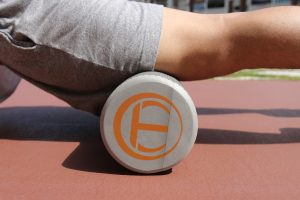
The fascia is connective tissue that runs throughout the body over the muscles.
Knots (also called hotspots) form in the fascia with normal damage from exercise.
Using a semi-rigid foam roller to knead out the hotspots will do wonders to alleviate muscle soreness.
6. Cold bath.
Ice baths, while not pleasant, have been shown to be very effective.
A full-body plunge after a heavy workout can help reduce muscle soreness and inflammation for up to 24 hours.
There are a lot of other home remedies out there for soreness.
Every athlete is different and has different needs when it comes to recovery.
Be sure to listen to your athlete and find out what they need.
Maintaining a healthy body is the key to success in any sport.
I hope you found some value with today’s post.
If you did please like, comment and share.
Play Big!
Coach Steve
PS: Get your FREE TrenchTraining.com Membership with exclusive content. Click Here to get Registered!
Photo credits:
Ron Cogswell – altered
